If you are an athlete engaged in baseball, softball, or any throwing sport, cultivating core strength stands as a pivotal component of optimal performance and injury prevention. The importance of Core Exercise in Athletic Training addresses the significance of a well-structured core workout regimen tailored explicitly for throwing athletes.
Before diving into the exercises, it’s essential to understand the importance of moderation in workouts—ensuring activation and strength without exhausting the body. This blog comprehensively introduces four fundamental exercises, each targeting core engagement and stability while aligning with the specific needs of throwing athletes.
1. T-Spine Opening Exercises:
The T-Spine Opening Exercises serve as a cornerstone for refining the core strength vital to throwing athletes. This exercise centers on activating the thoracic spine, not only unleashes the T-spine’s potential but also primes the core, serving as a fundamental warm-up routine. Here’s a step-by-step guide for executing the exercise accurately.
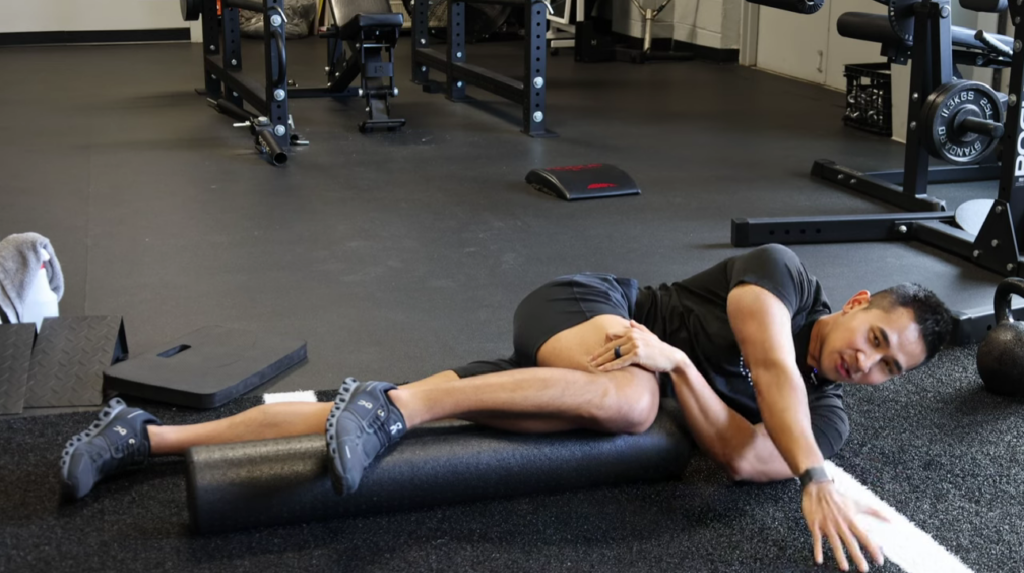

- Setup: Place a foam roller horizontally on the ground.
- Positioning: Lie down on the foam roller, ensuring it aligns with your upper back.
- Focus on T-Spine: Direct attention to the thoracic spine (T-spine) area.
- Leg Positioning: Pin one leg down firmly for stability during the exercise.
- Rotation Movement: Slowly rotate your upper body, guided by the movement of your hands.
- Repetitions: Perform approximately 10 controlled repetitions on each side.
This exercise proves invaluable even for newcomers and parents as it offers an accessible gateway to the advantages of T-spine mobilization. By aligning core engagement with arm movements, it bridges the gap between core strength and throwing proficiency, an essential synergy for peak performance in throwing sports.
2. Dead Bug Exercise:
The Dead Bug Exercise is a foundational core-strengthening routine recognized for its exceptional ability to target and bolster core muscles effectively. Its primary emphasis revolves around activating and strengthening the core by meticulously preventing any arching of the back. This exercise’s emphasis on precise movements and robust core engagement renders it an advanced workout essential for athletes striving for heightened stability and performance gains. Follow these steps to effectively perform the exercise:
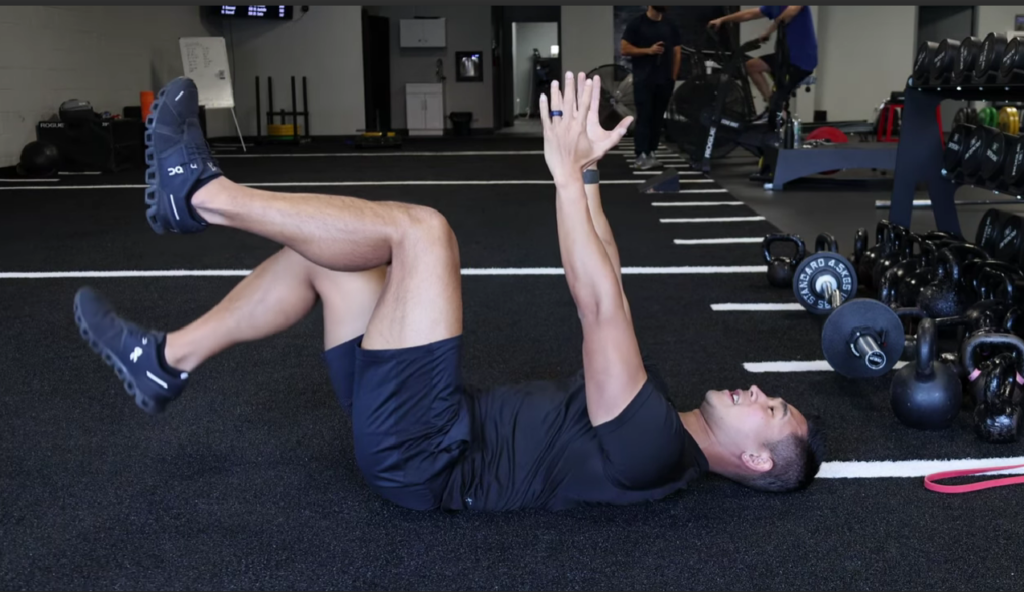
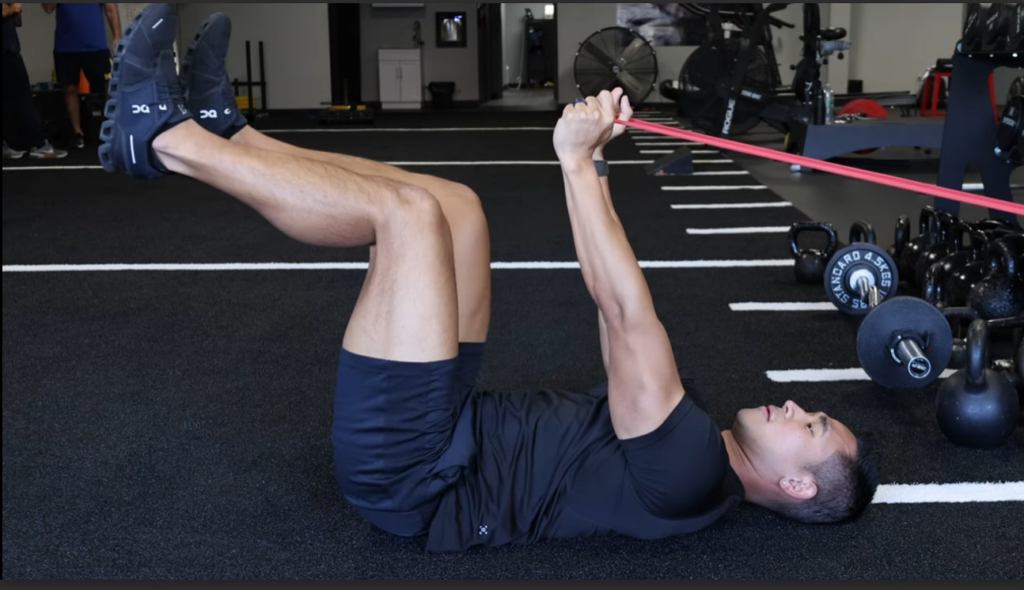
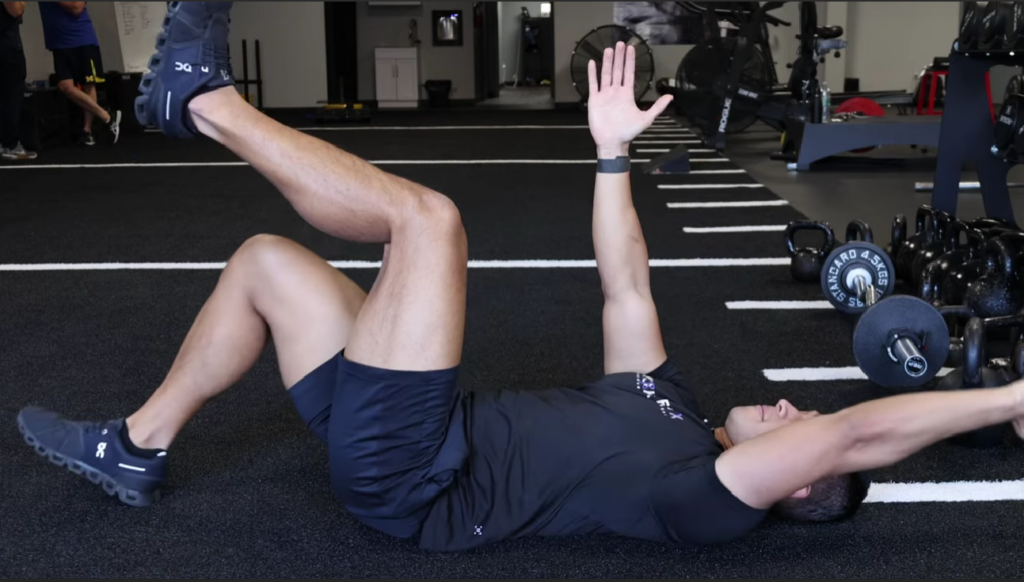
- Positioning: Lie down, focus on pressing your lower back into the floor, engaging the core and ensuring the ribcage remains stable.
- Movement Initiation: Gradually raise your legs while simultaneously reaching upward, maintaining a stable neck position.
- Controlled Movements: Slowly tap one heel down at a time, avoiding any arching of the back, and perform five repetitions on each leg.
- Progressive Challenge: Increase difficulty by incorporating a resistance band, resisting its pull to engage upper core muscles further.
- Advanced Variation: Elevate intensity by alternating opposite arm and leg movements, promoting enhanced core stability, crucial for athletic performance.
For an intensified challenge, integrating a resistance band enhances core engagement and stability, while incorporating alternating arm and leg movements elevates the complexity, promoting superior core stability akin to movements in athletic pursuits.
3. Hips Power & Core Strength Exercise:
This core exercise is strategically designed to strengthen and unlock the potential of your core and hips, areas frequently underestimated yet pivotal in injury prevention and the enhancement of hitting techniques. To execute this exercise methodically and derive maximum benefits, follow this detailed breakdown step-by-step guide.
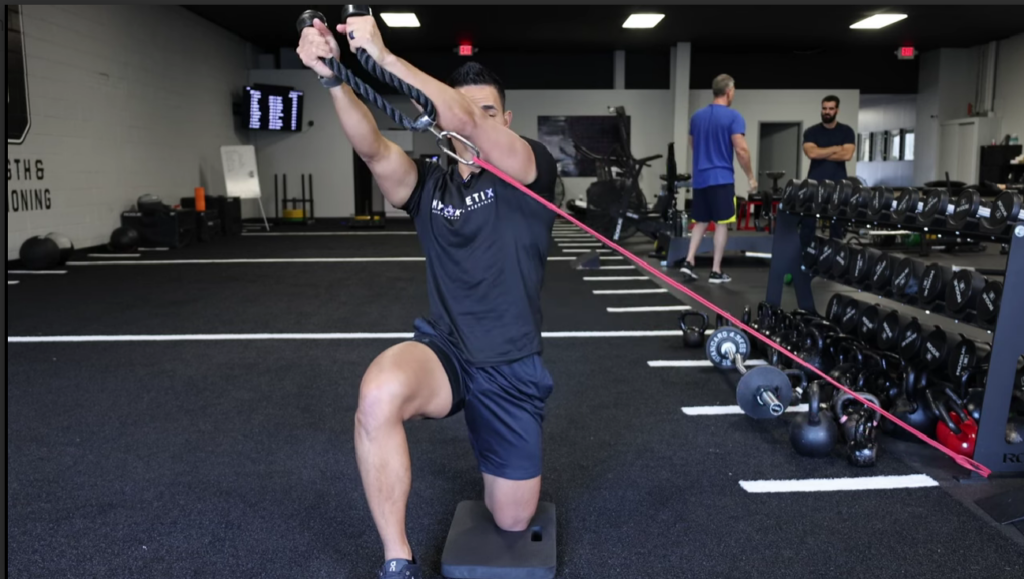
- Setup: Begin by setting up a resistance band diagonally and find a stable anchor point to hold onto during the exercise.
- Stance and Positioning: Stand with one leg raised and arms straightened out, ready to initiate the movement.
- Hip Loading: Concentrate on using your hips to load the movement, driving them to one side while allowing the resistance band to lower slowly.
- Controlled Motion: Follow through with your hip movement, ensuring a deliberate and slow return to the starting position.
- Repetitions and Sets: Aim for three sets of eight repetitions on each side, focusing on controlled movements that engage your obliques and balance out both sides of your body.
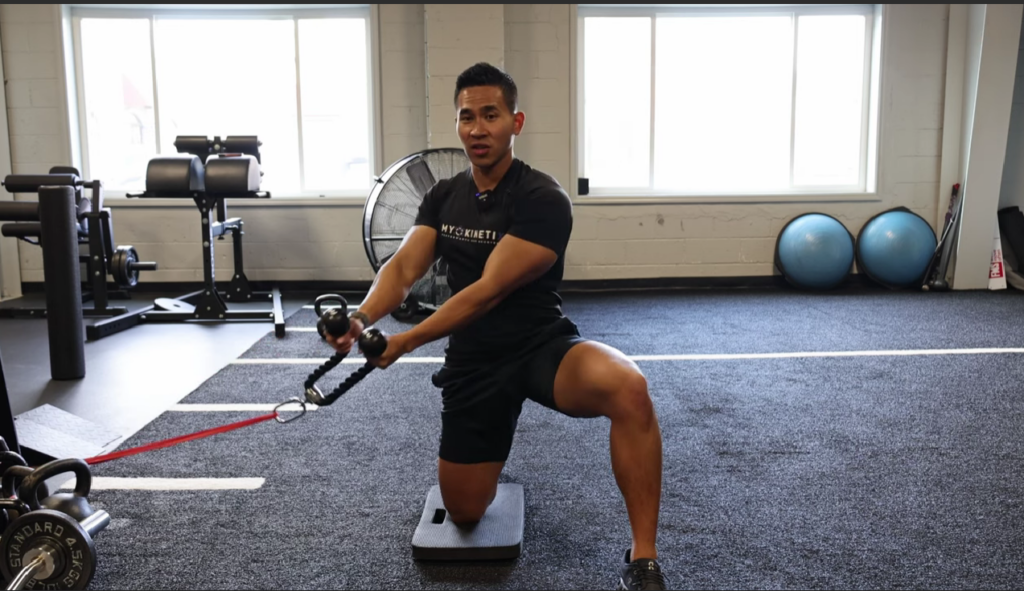
Keep in mind to emphasize the need to work on both sides to maintain balance. This is especially important for throwing athletes who often focus on one side predominantly. This exercise helps bridge the gap between rapid growth and physical strength development in young athletes. This reinforces the significance of core engagement and promoting overall physical development.
4. Farmers Carry Exercise
The Farmer’s Carry stands as an invaluable core exercise. It not only zeroes in on strengthening the core but also spotlights the improvement of posture. This is a facet frequently overlooked, especially among young athletes grappling with shoulder discomfort stemming from extended periods of sitting and compromised posture. To effectively execute this exercise and reap its benefits, follow these steps:
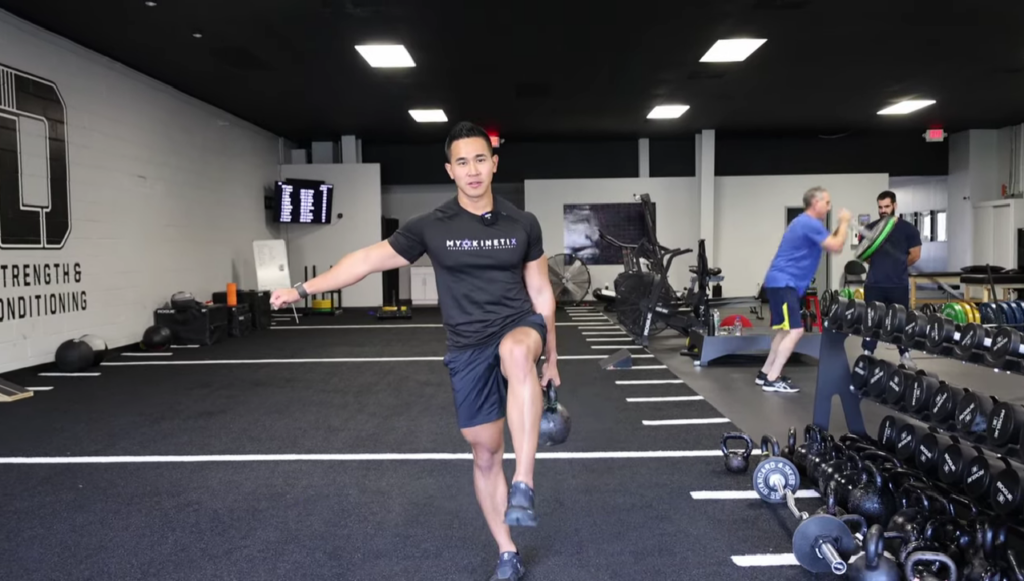
- Posture Focus: Stand upright, ensuring your shoulders are pulled back. Visualize retracting your shoulder blades into your back pockets to achieve proper posture.
- Weight Distribution: Hold weights or objects at your sides, aiming for a solid, balanced stance. The goal is to engage your core and maintain the correct posture throughout.
- Execution: Aim to walk or march for around 30 seconds. Focusing on preventing the weights from pulling you forward, thereby engaging your obliques and stabilizing your core.
- Stabilization through Movement: While walking or marching, emphasize the engagement of your hips to stabilize your body. Try simulating the action required during pitching or hitting in sports.
- Switching Sides: If you’re a left-handed pitcher, ensure you drive your right foot into the ground while performing this exercise. To feel the hip engagement, it is crucial for pitching movements.
- Repetition and Sets: Perform three to four laps, maintaining core engagement and proper posture throughout each lap. This is to maximize the exercise’s benefits for core strength and posture improvement.
Check out this video as Dr. Natty shows these exercises to strengthen your core.
These exercises offer a structured routine designed specifically for throwing athletes. They not only enhance core strength but also emphasize the integration of core engagement into sports-specific movements. Whether a beginner or an experienced athlete, these exercises serve as foundational steps toward better performance and injury prevention. It offers a strategic approach on how to improve performance while safeguarding against potential injuries. This serves as an essential resource for athletes seeking enhanced stability and optimal performance in throwing sports.
At Myokinetix, we prioritize strengthening athletic abilities and preventing career-limiting injuries. Our team of highly trained physical therapists specializes in guiding athletes of all levels. Through our state-of-the-art facilities and holistic training approach, we foster an environment for growth and development. Our commitment lies in empowering athletes to perform at their best, ensuring they can sustain successful, enduring sporting careers.
CONTACT US TODAY at 973-281-4936 to learn more or schedule a time to talk with our patient development coordinator here.
